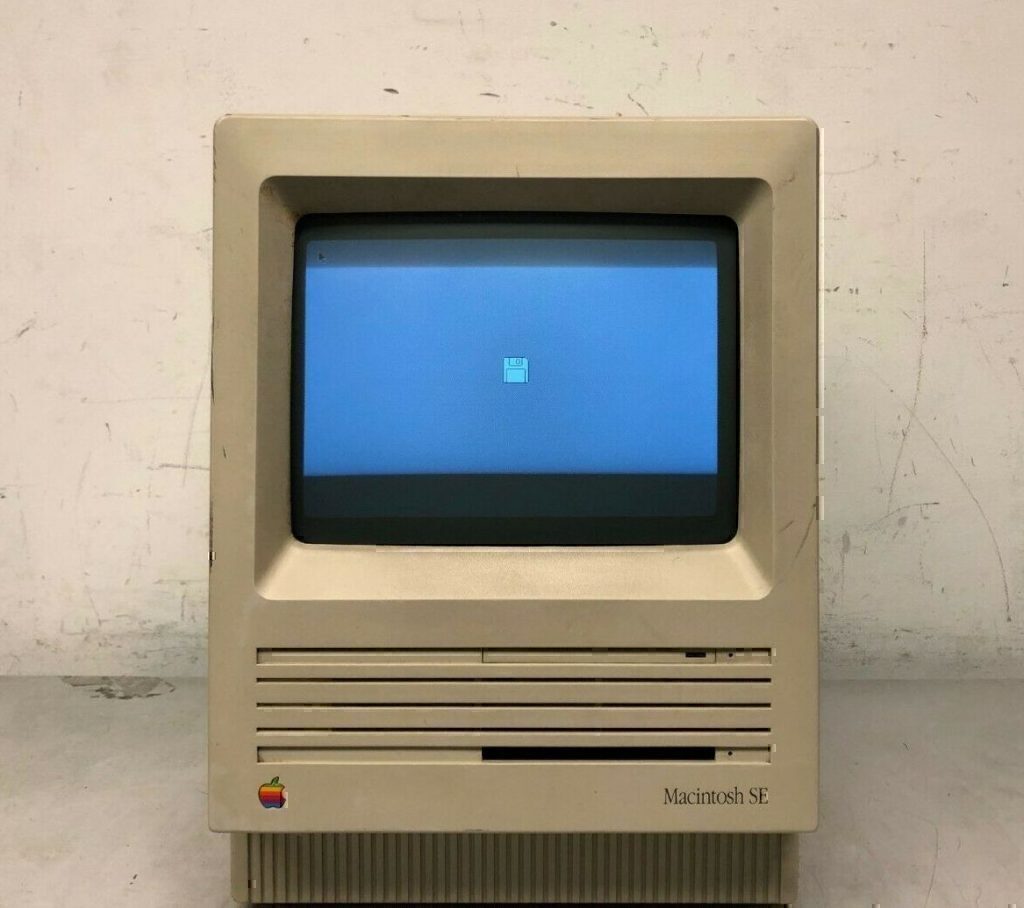Launched in 1986, the Apple IIGS is the strangest and most wonderful of the Apple II line — and in many ways the grand finale. The GS is a fascinating machine, heavily influenced by Steve Wozniak. The GS stood for Graphics and Sound, and this machine was well equipped for both as an answer to its contemporaries, the Amiga and Atari ST computers. While the IIGS co-existed with the Macintosh, its older CPU architecture and deliberately reduced clock speed kept it from competing with Apple’s flagship. However, the incredible library of 8-bit Apple II software ran well on the GS, and a decent selection of new 16-bit apps were built to run natively during its life time. The graphical environment that replaced Apple’s ProDOS looked remarkably Mac-like — but in beautiful color at a time when Macs were only black and white.
As well as great games, the IIGS also supported “modern” technology like AppleTalk networking and its easily-accessible internal expansion slots made it easy to expand and update the machine for decades to come. Even now hobbyists are making RAM, storage and maybe soon accelerator add-ons for it.
I got the base unit from a collector in trade for a Mac I had restored, and salvaged a compatible ADB keyboard and mouse from a bin in my basement. I’d have loved to pair it with the original keyboard, but it was just too expensive on eBay. After seeing how bad the picture looked on a modern display (due to the heavy use of dithering tricks they built in to coax a higher resolution out of the ancient tech) I searched long and hard for an original monitor, finally finding one a 3-hour drive away. I lined up a pick-up as part of a business road trip.
I replaced the battery, which had not leaked, and the “magic smoke” RIFA capacitors in the PSU, but found it to be in great condition otherwise, so didn’t perform a full re-capping. Save for the monitor, and metal shielding in the case, disassembly was a piece of cake, and everything brightened up nicely in liquid peroxide and hot water in the sun. Only the power button and adjustment dials on the monitor could not be removed, so retained a yellow look. Once it was serviced, it was time to try out some of those upgrades.
I purchased a 4MB RAM card from Garrett’s Workshop — happy to support another Ohio hobbyist, and a Drive/Turbo CF storage adapter from ReActiveMicro as an internal hard drive. I loaded it up with the fan-made GSOS 6.04 and a bunch of hard drive compatible (or modded-to-be-compatible) apps and games. For compatibility, I found a killer floppy that loads a lightweight GSOS 6.01 onto a RAM Disk and reboots from it.
Probably the most fun was networking the IIGS. I have an AppleTalk/LocalTalk ring around the basement that’s bridged to Ethernet by a Performa. I was able to mount network shares, including one on a Raspberry Pi, network boot, and connect to (but never successfully print to) a LaserWriter-compatible Brother printer.
After two tries, I found a working external floppy on eBay for under $100, and cleaned the heads. The remaining original parts were about $135, and upgrades were another $130, making this an expensive project — but one of my favorites. Break-even calculation is pending, since I traded the complete system to another collector for at Atari Mega ST that needs some love.
You can see a video of this unit in action here.

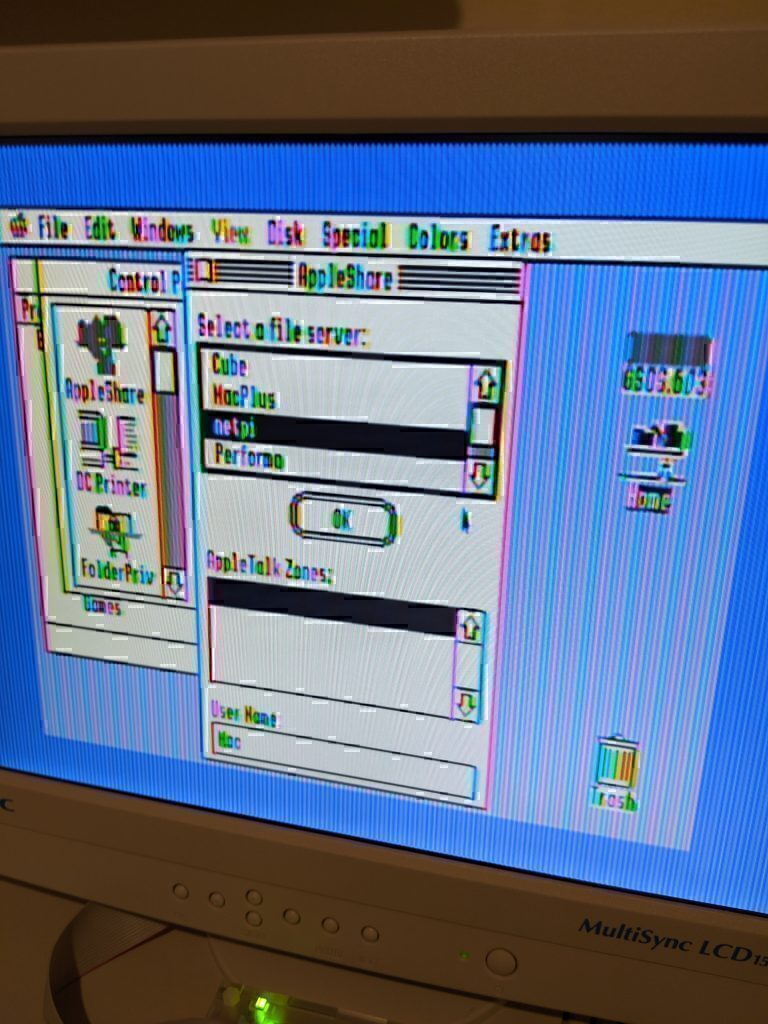
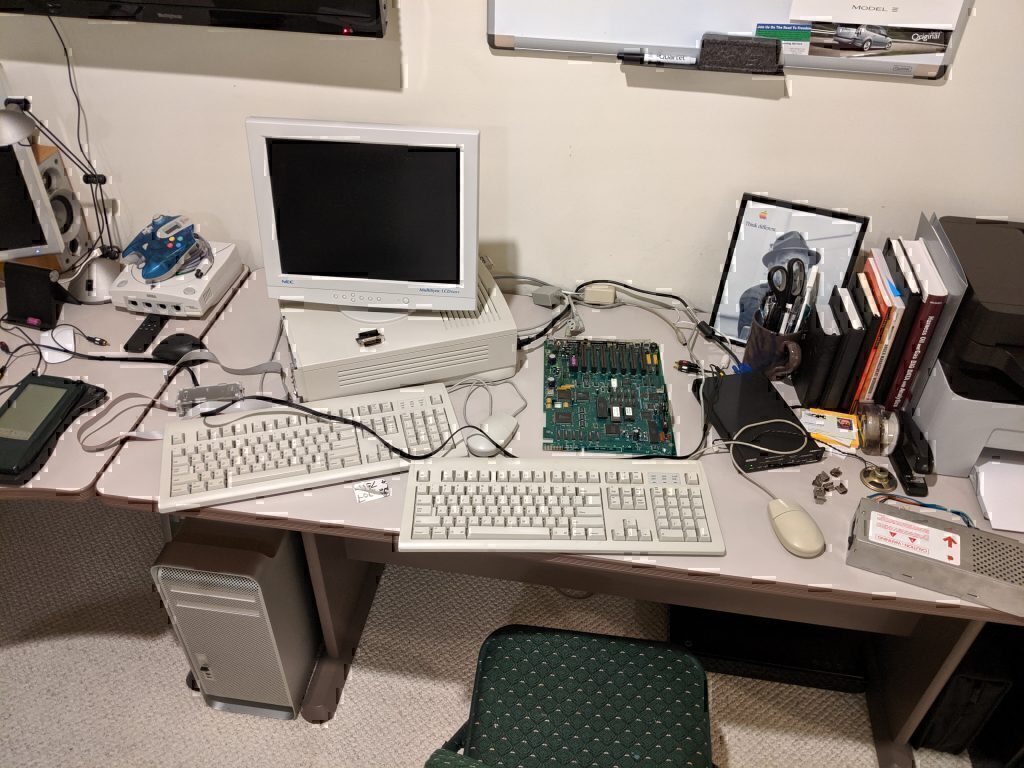

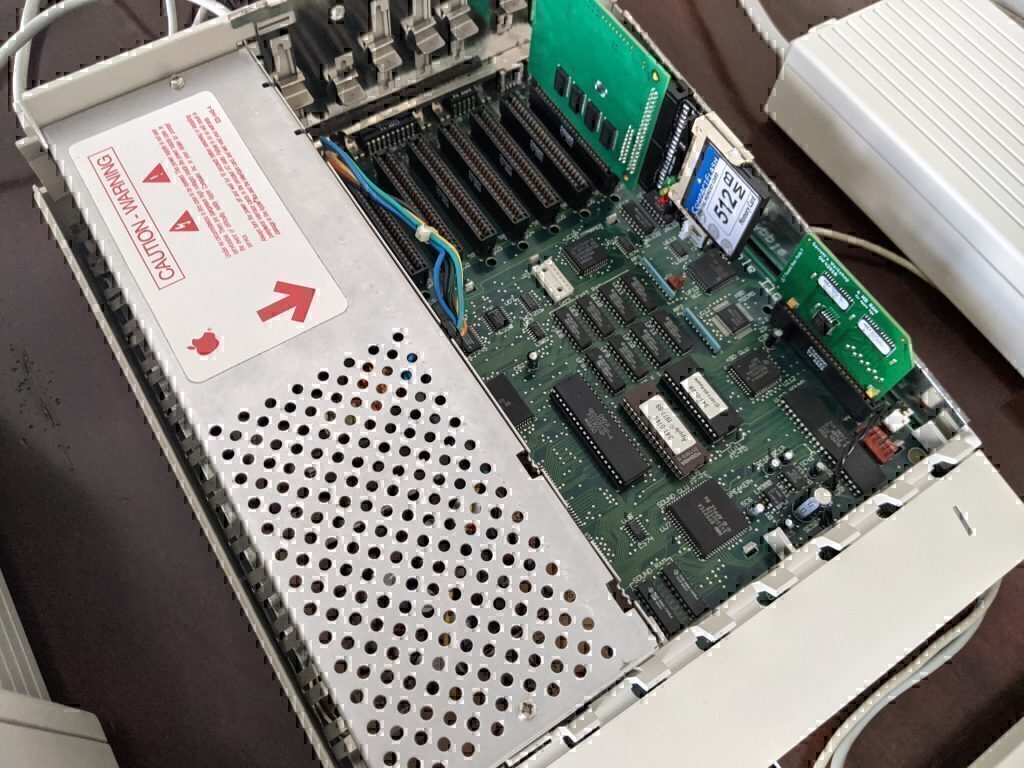
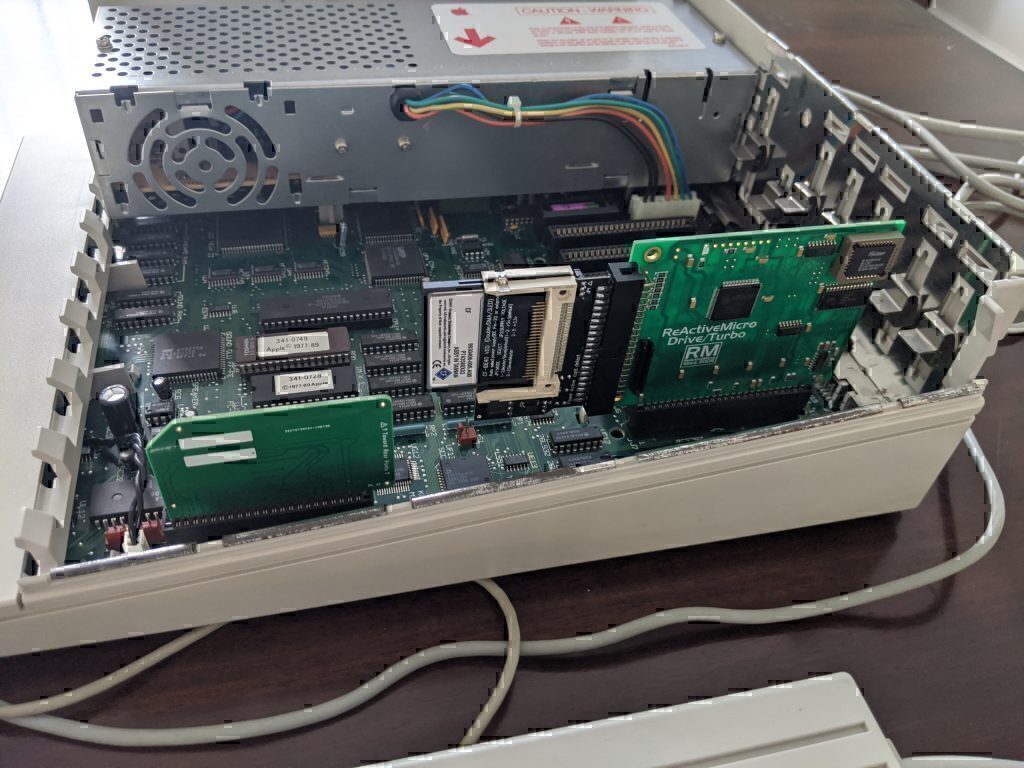
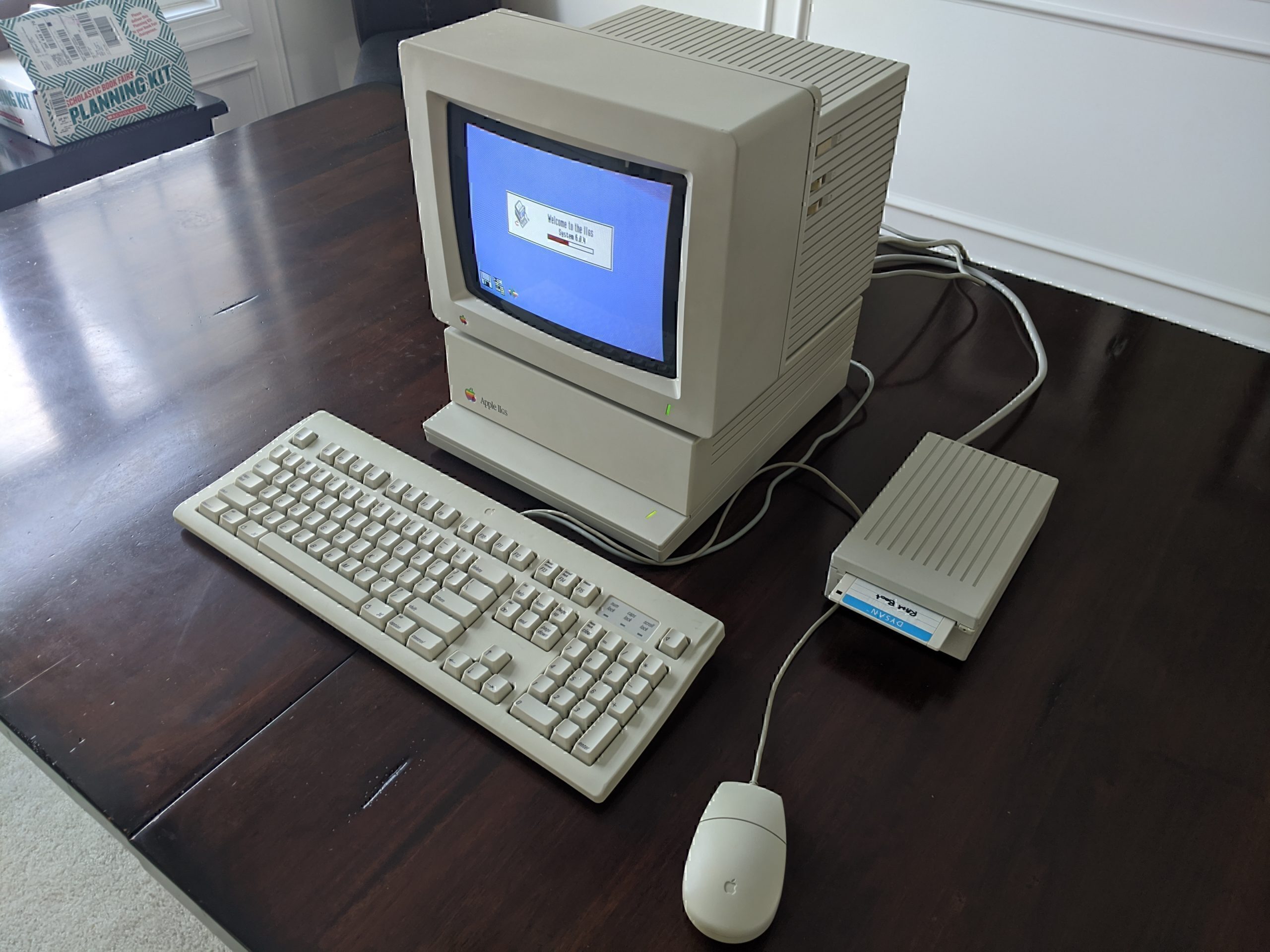
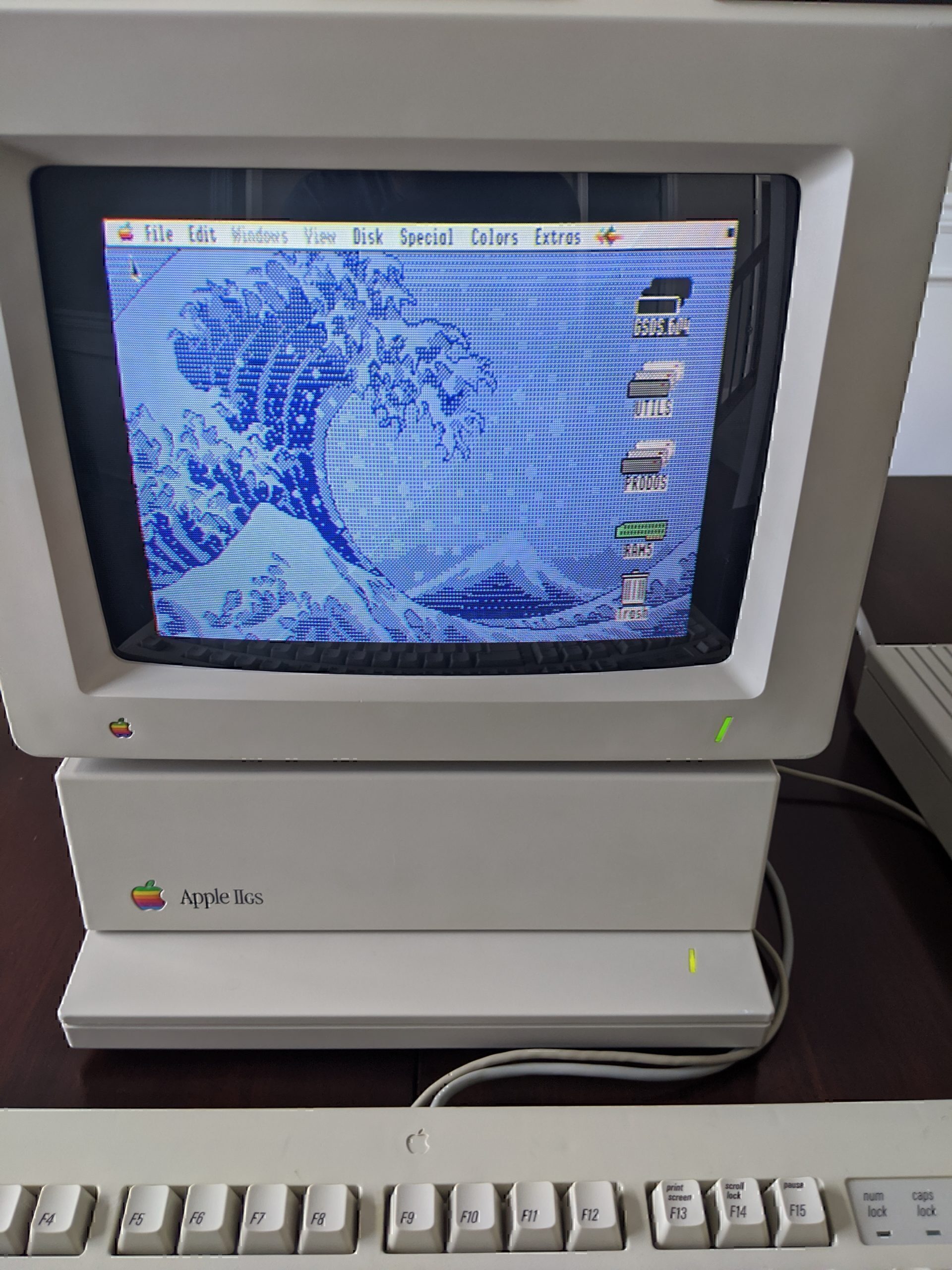
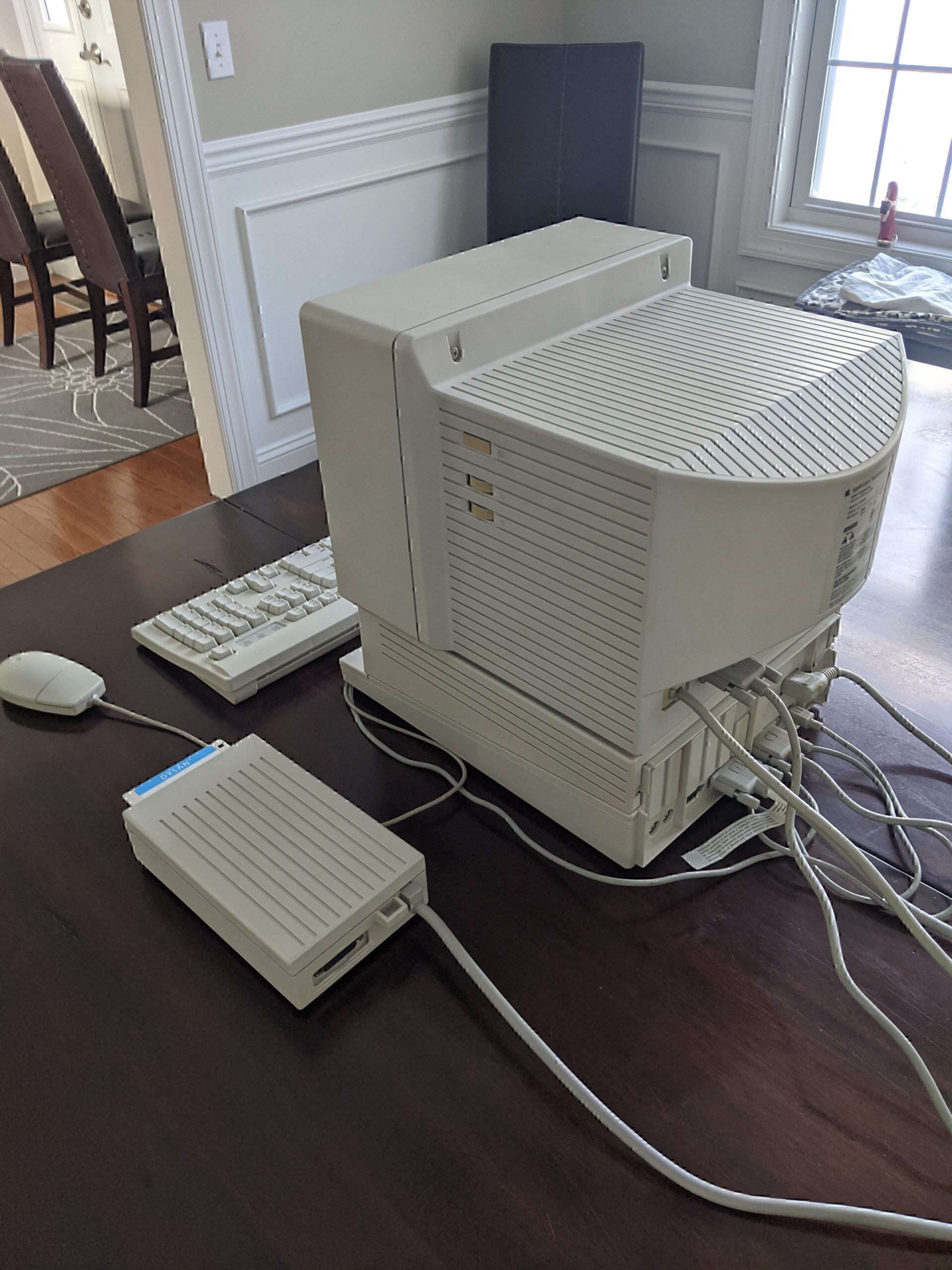

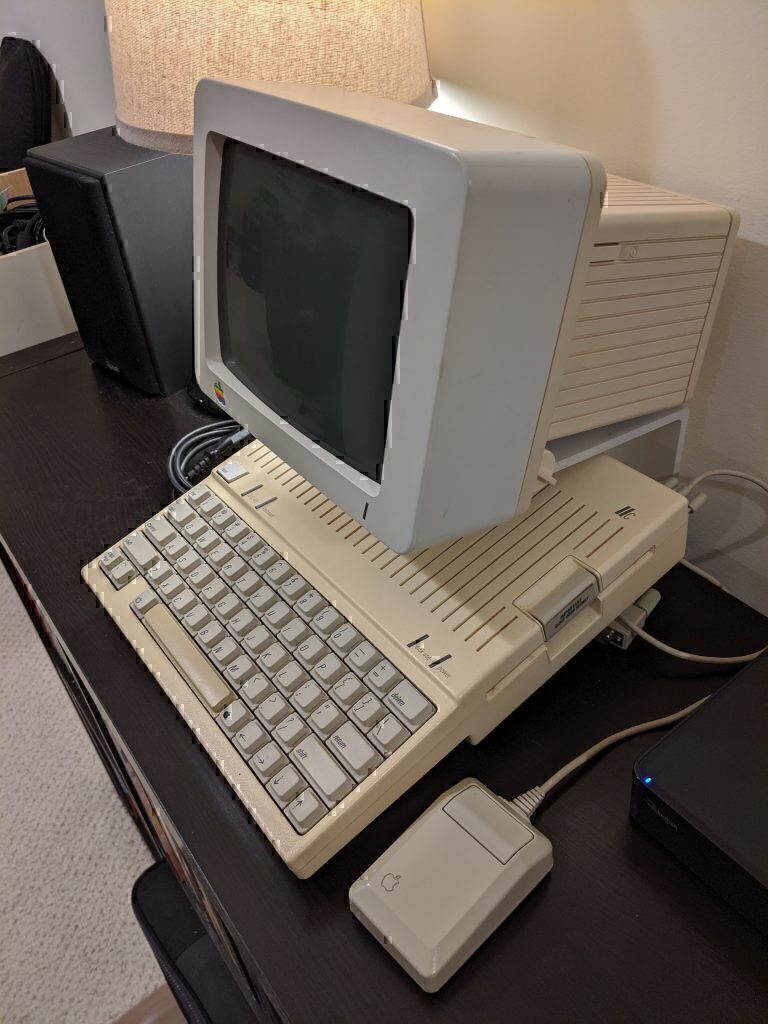
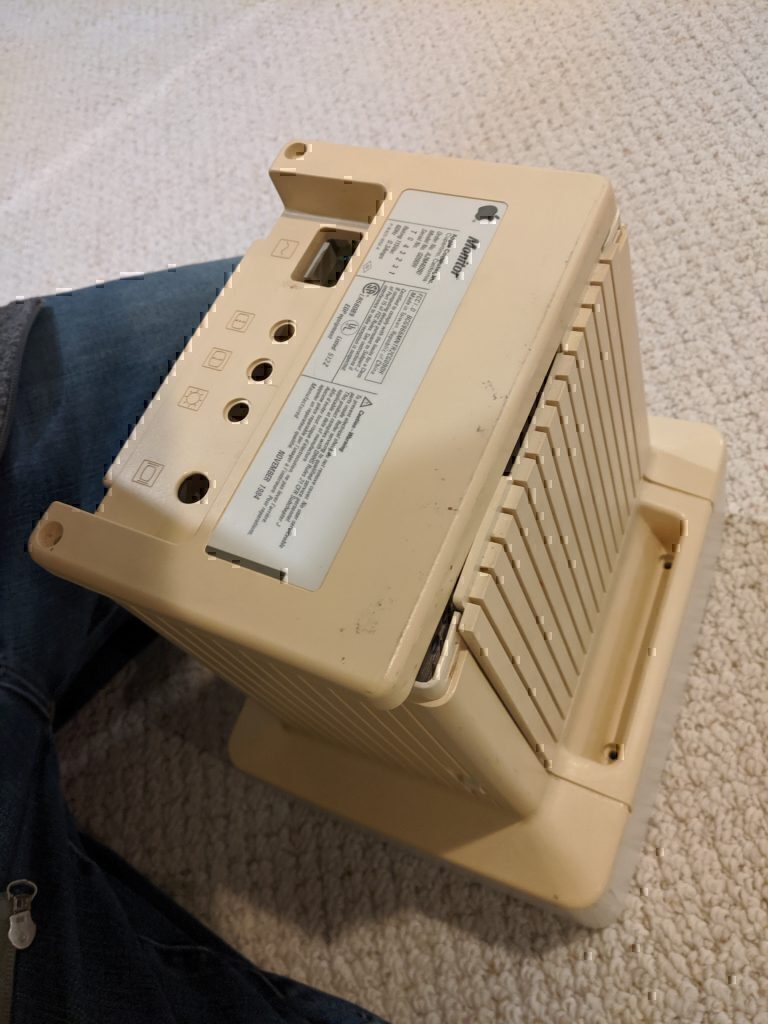
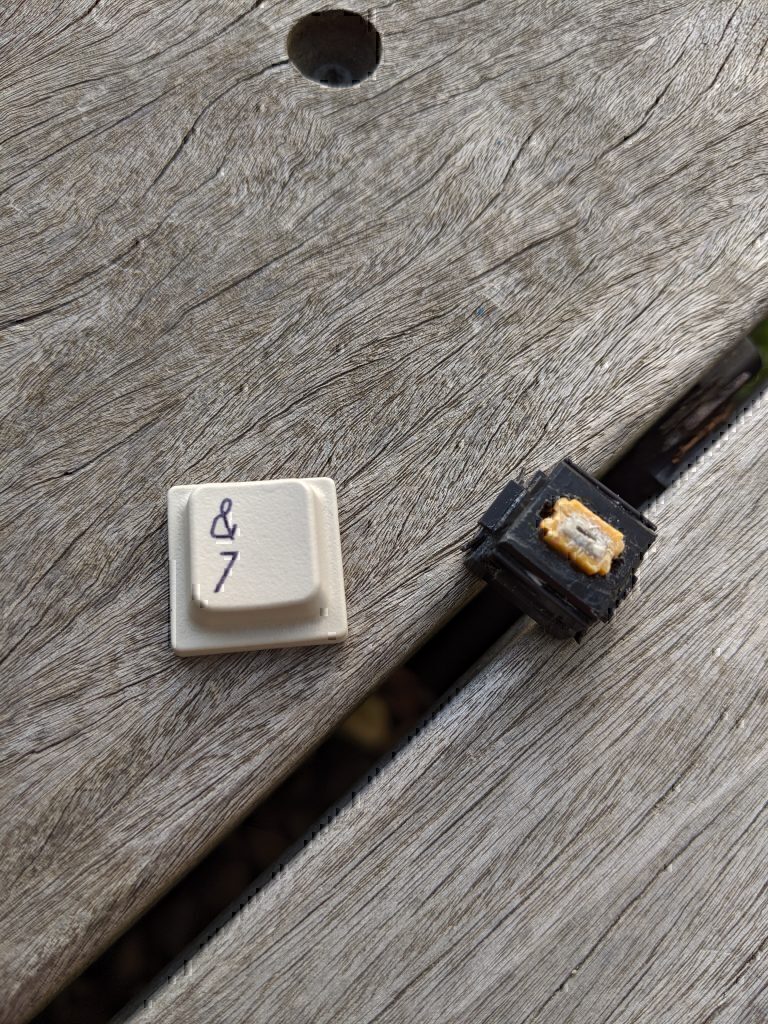
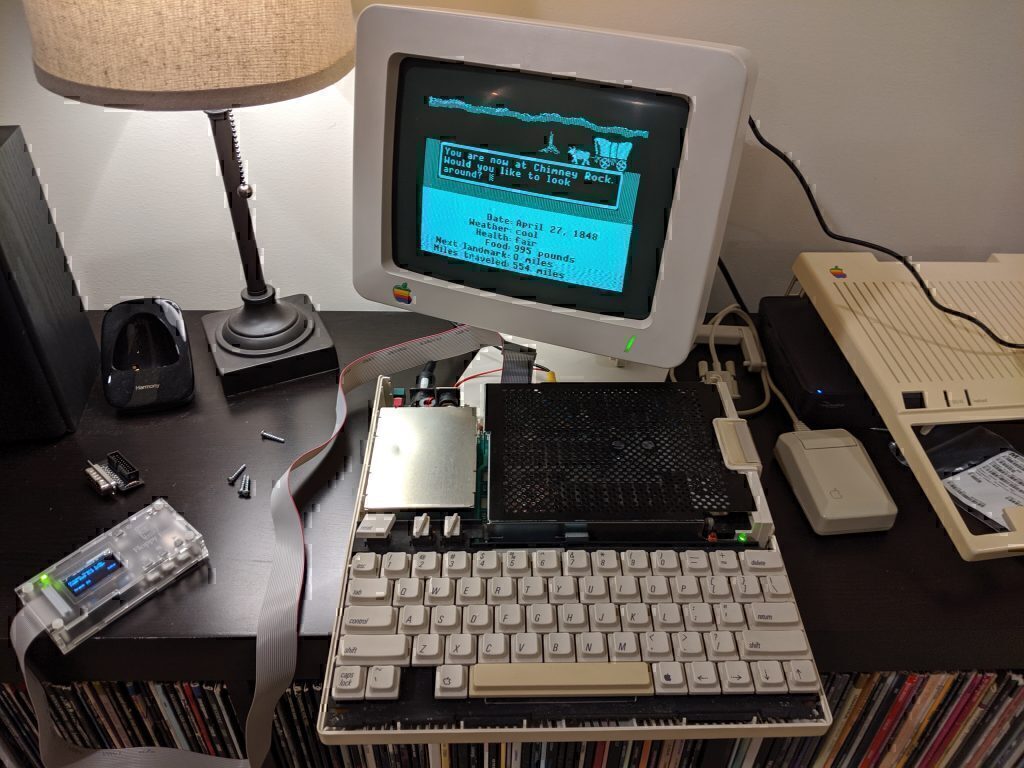
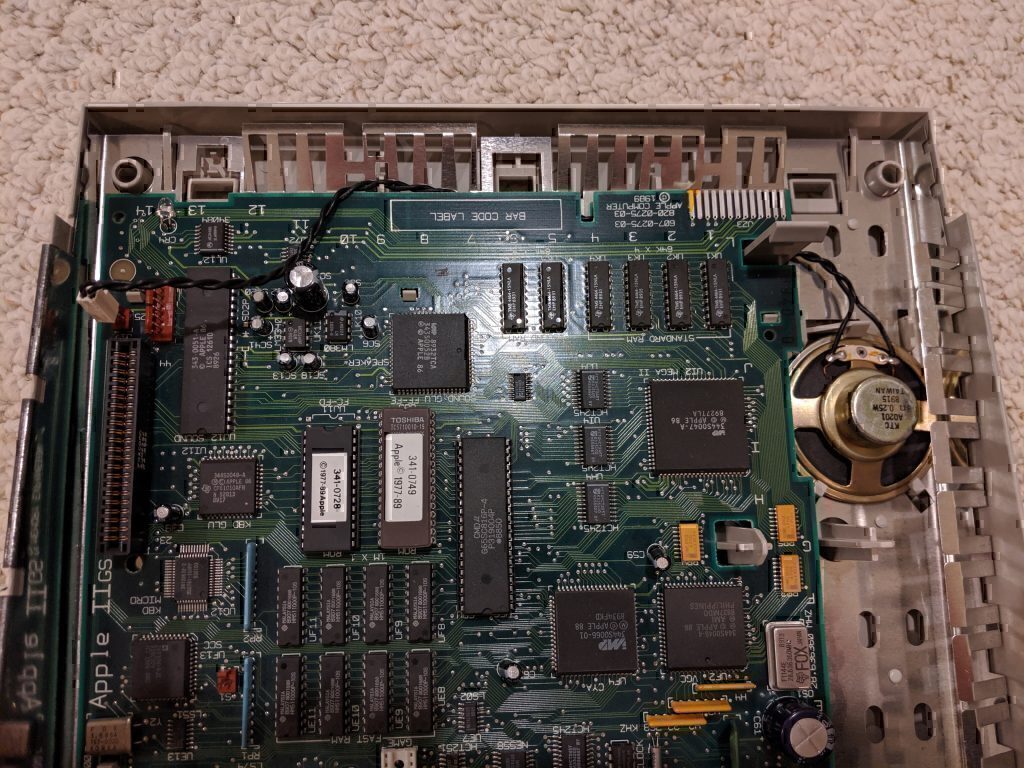
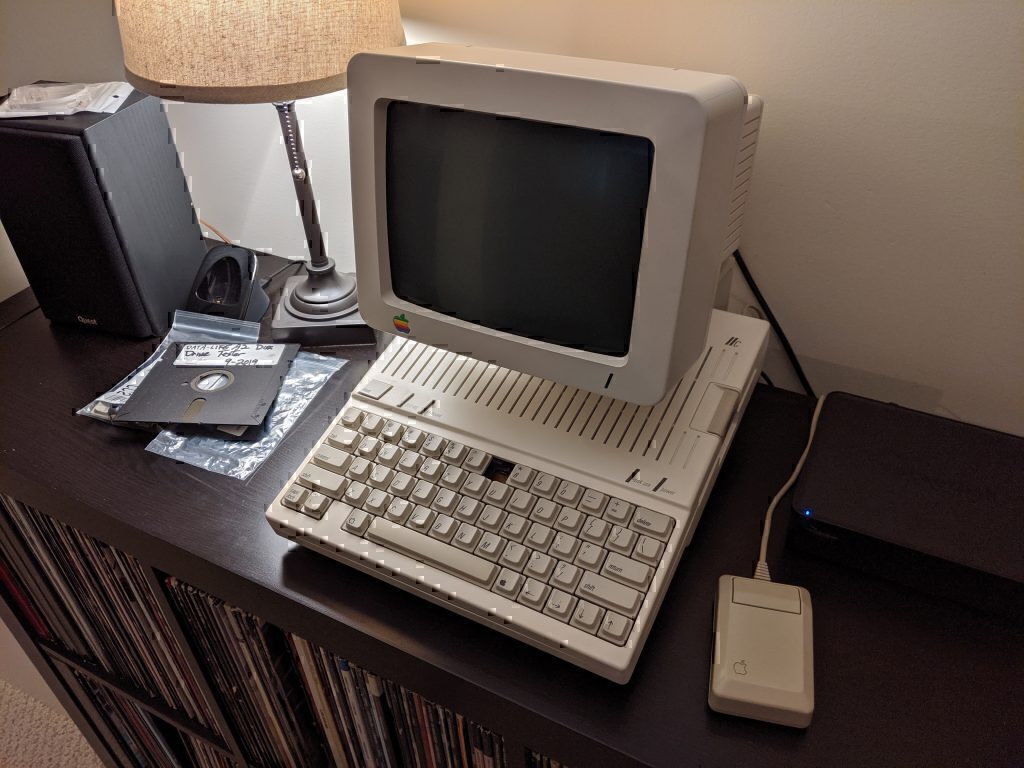
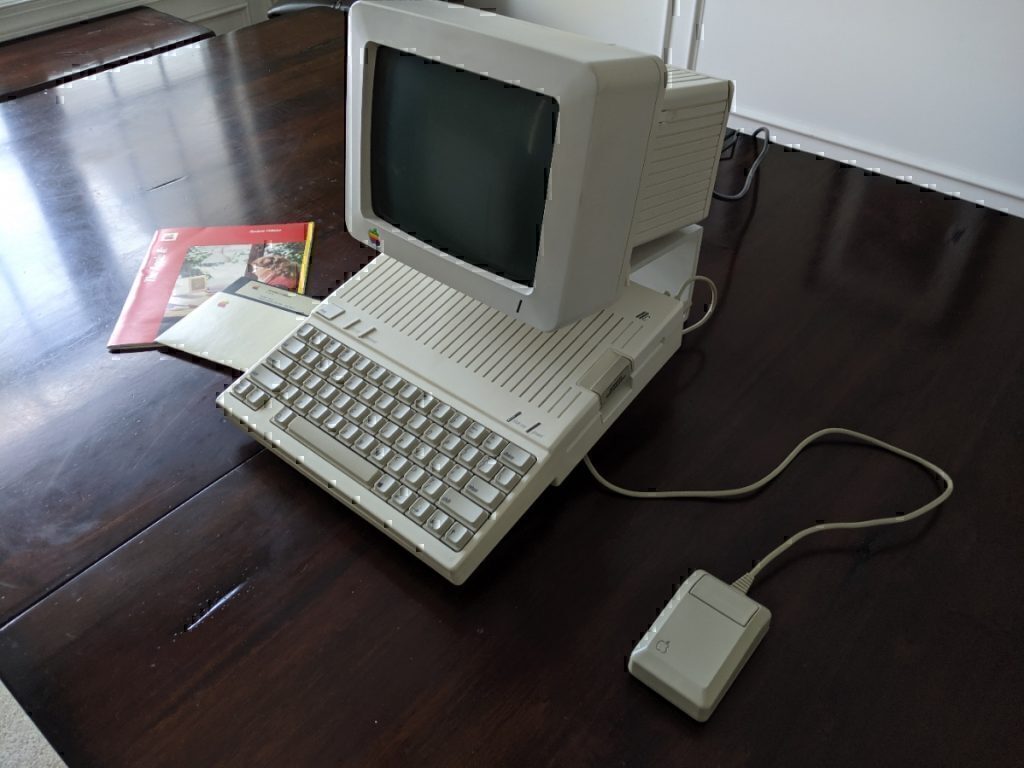

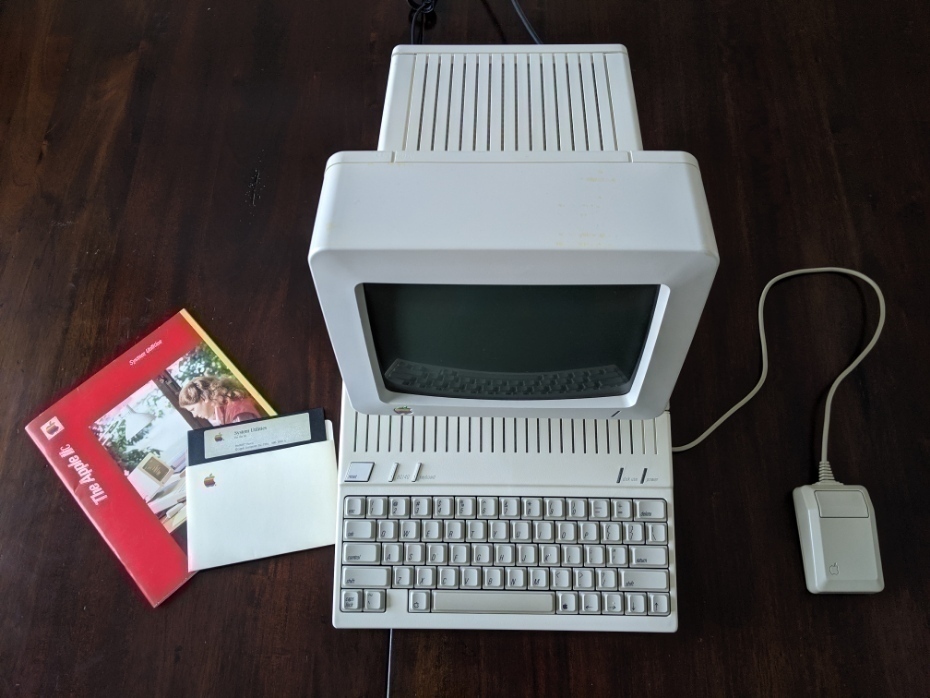
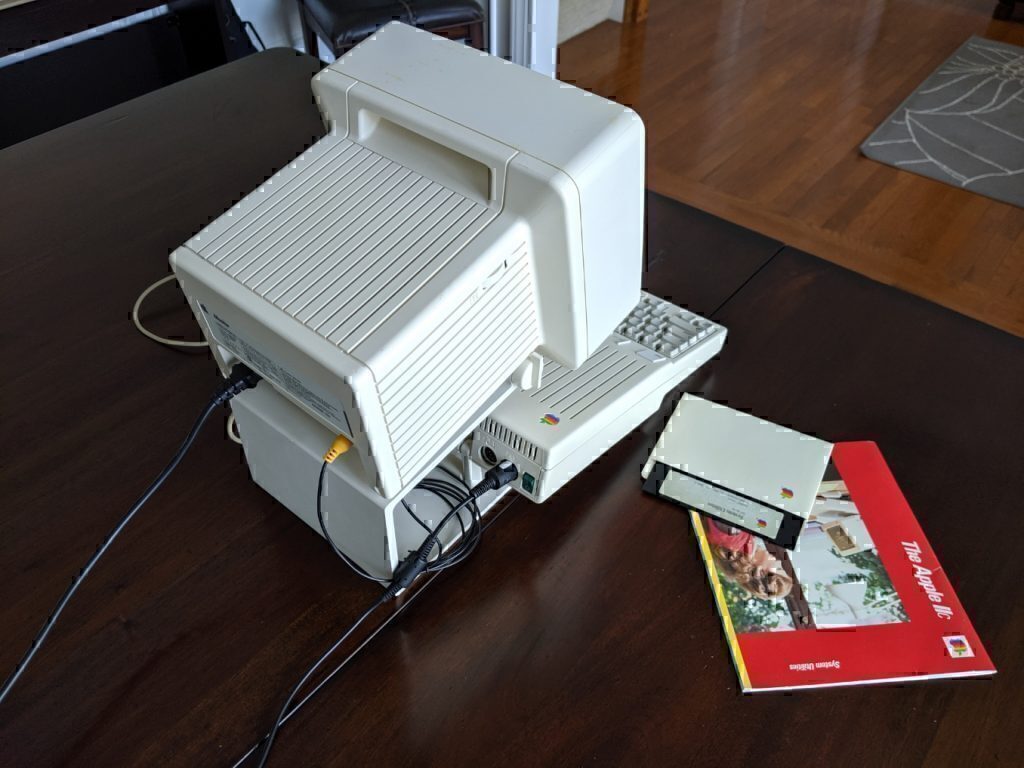

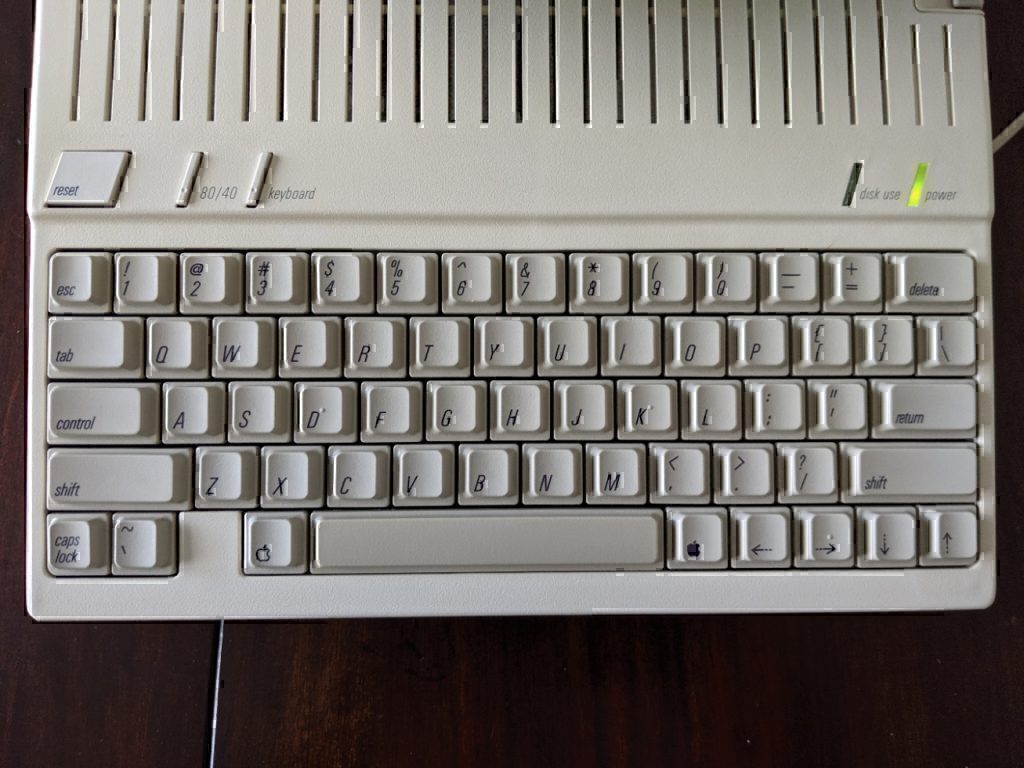
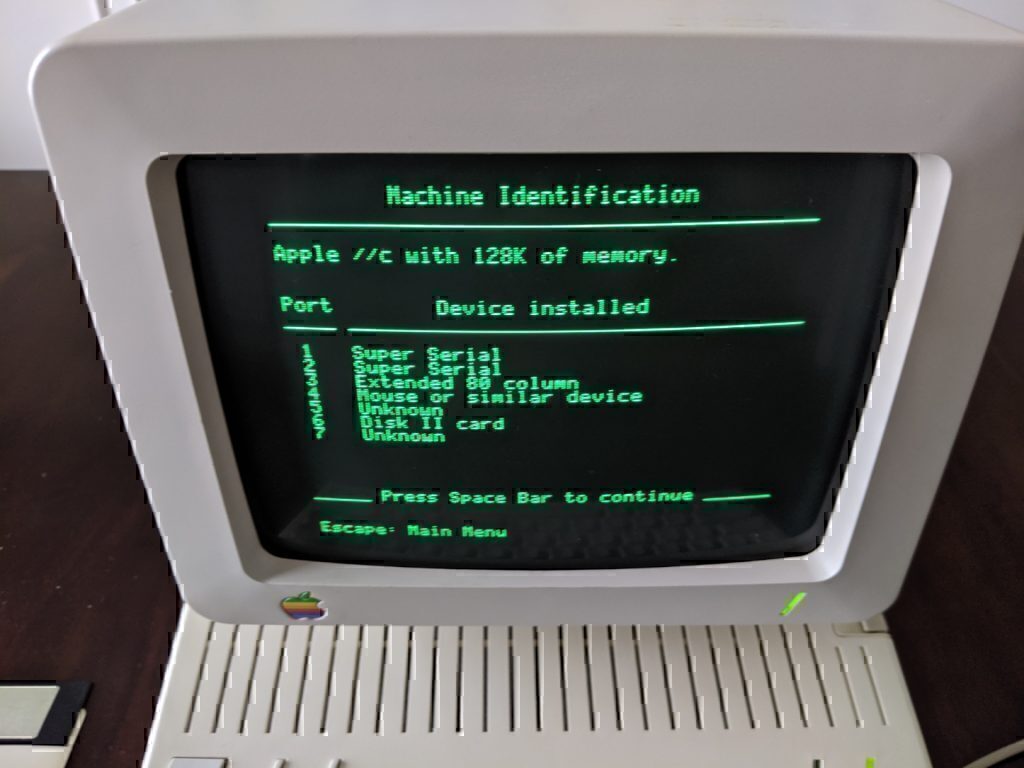
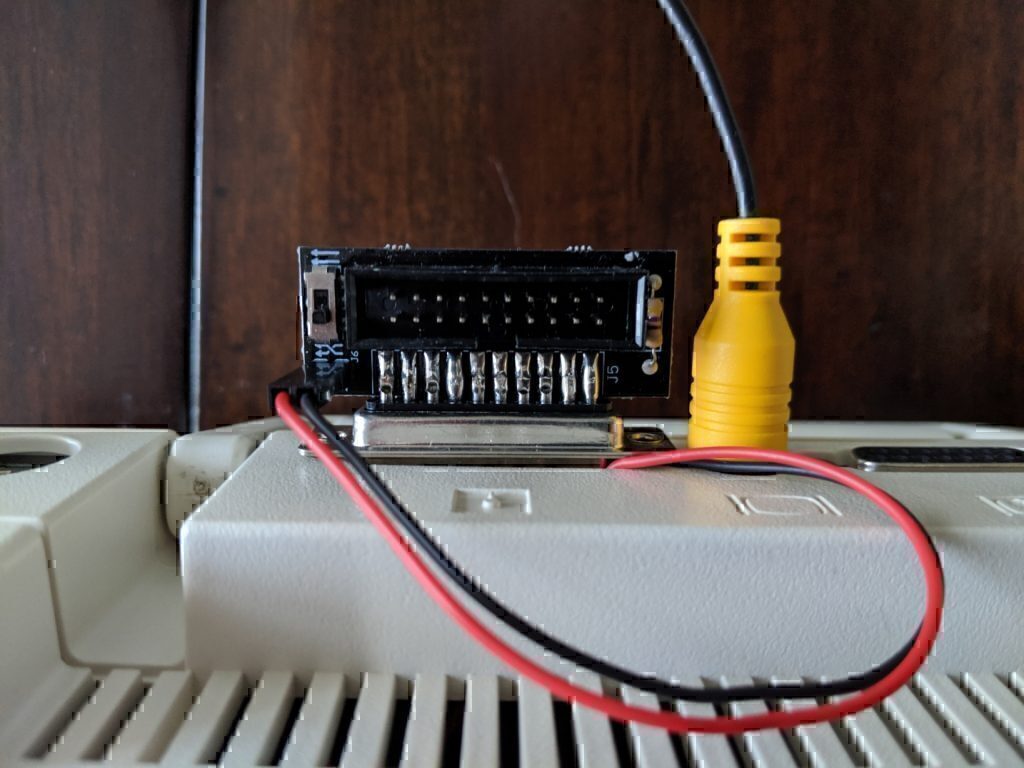
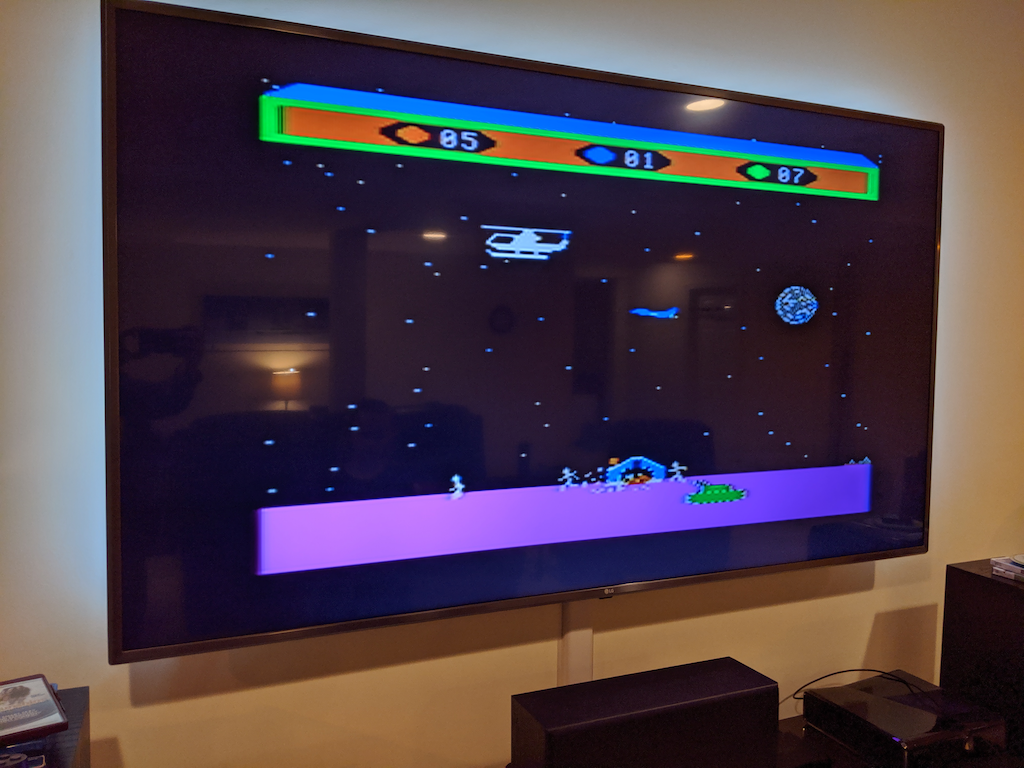
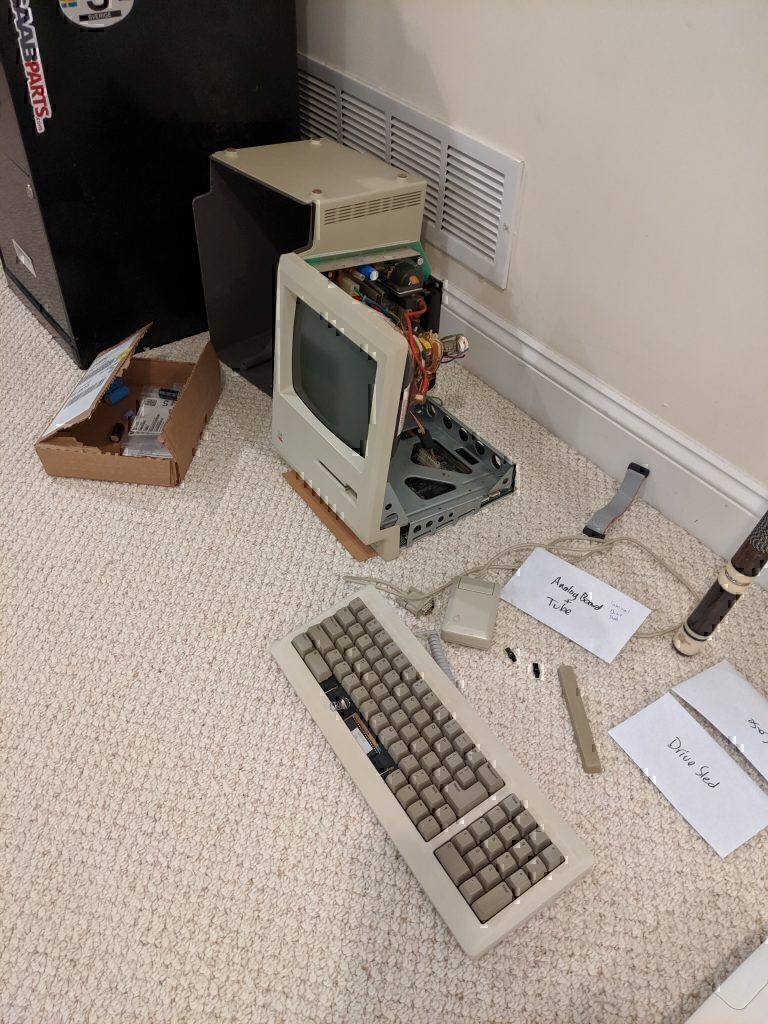
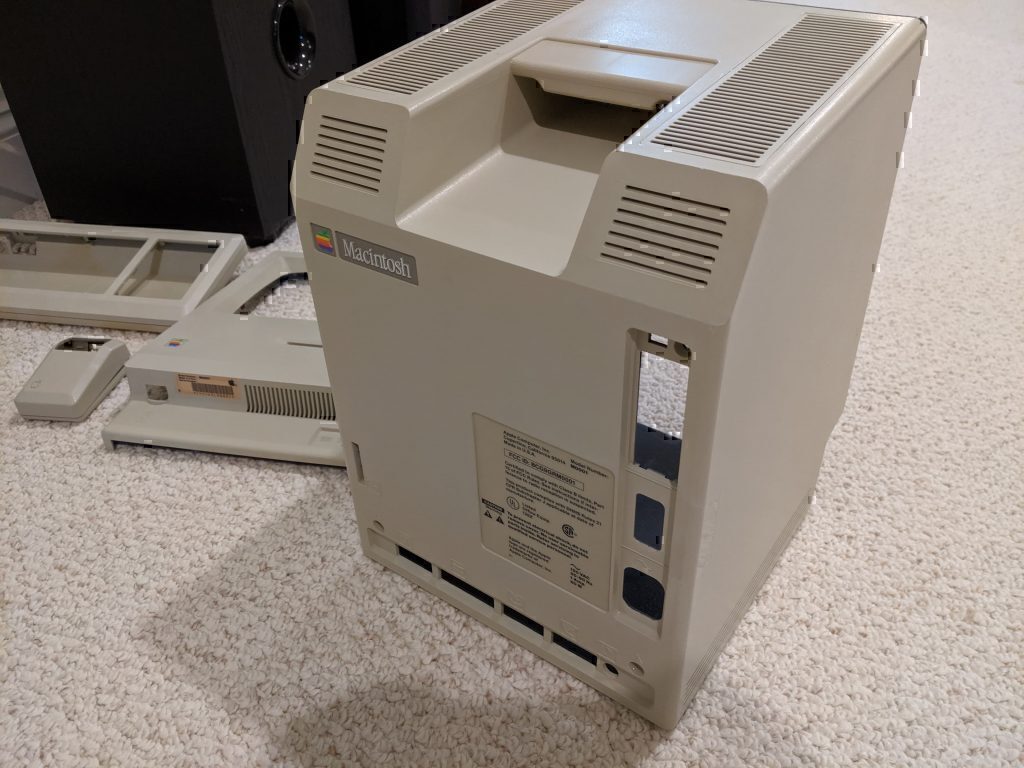
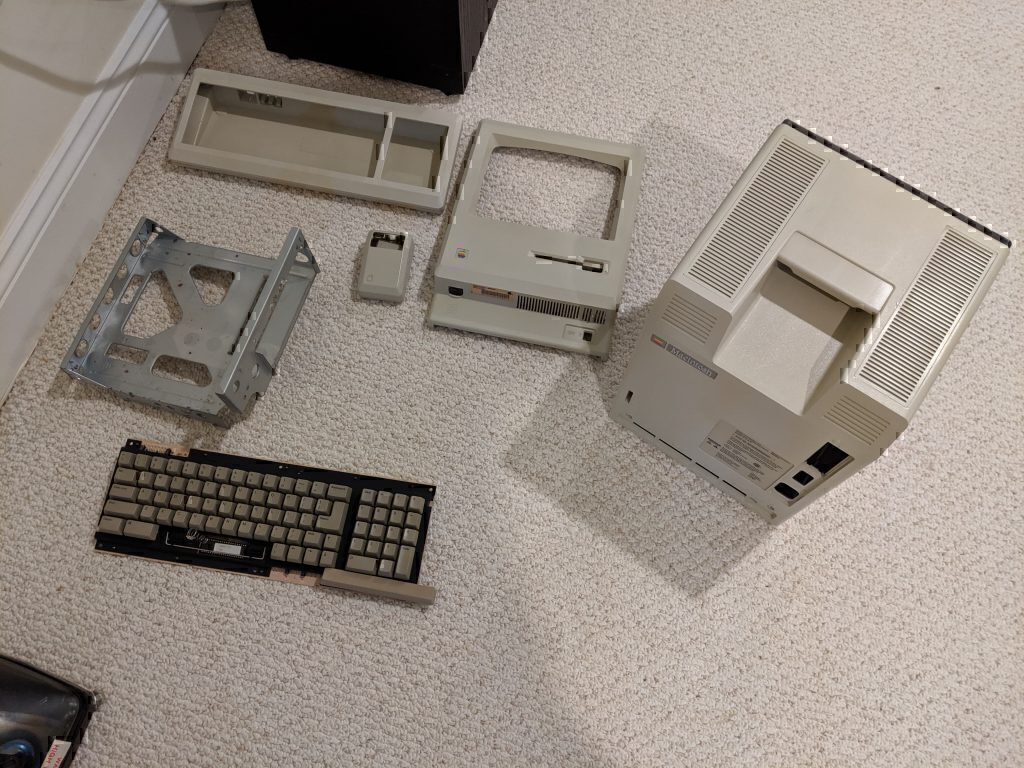
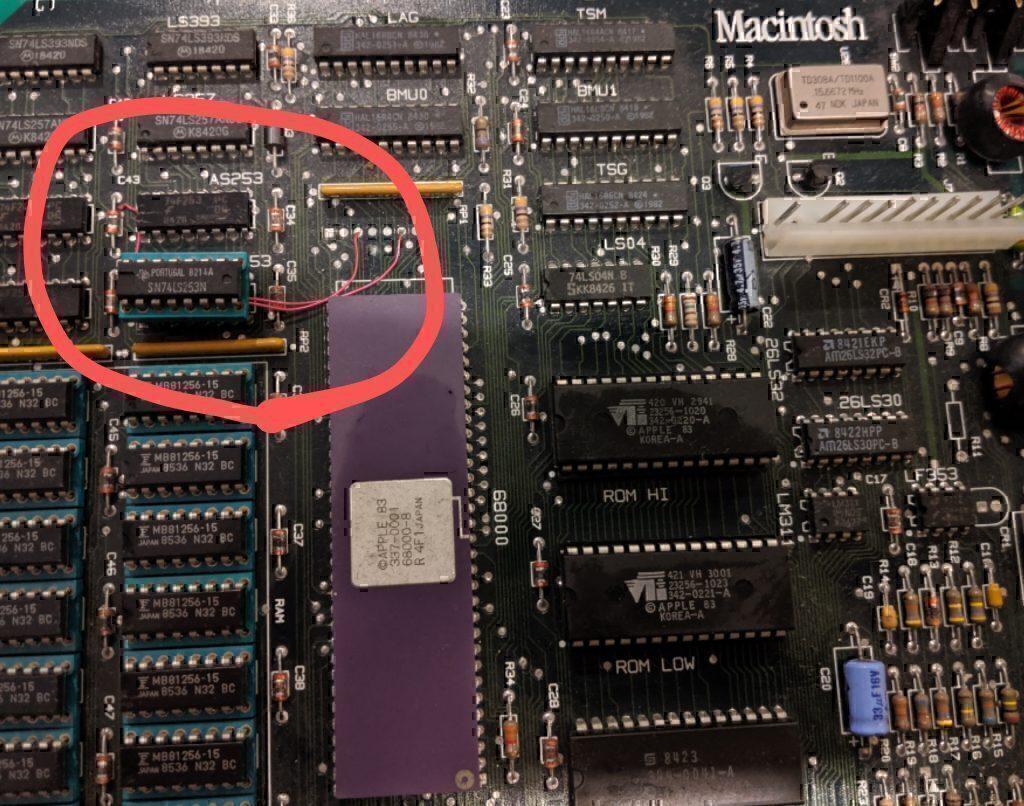






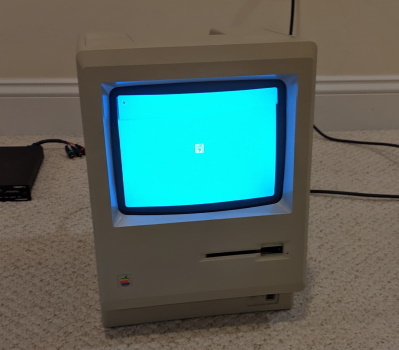 As you can see in the pictures above, the screen size was initially a little bigger than stock. Adjustment proved difficult, since the pot had crumbled with age. Eventually I managed to shrink it a little with a carefully carved stick (a scary experience that prompted me to buy some plastic adjustment tools!)
As you can see in the pictures above, the screen size was initially a little bigger than stock. Adjustment proved difficult, since the pot had crumbled with age. Eventually I managed to shrink it a little with a carefully carved stick (a scary experience that prompted me to buy some plastic adjustment tools!)